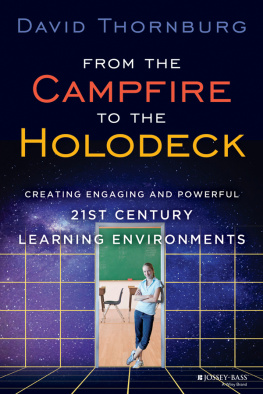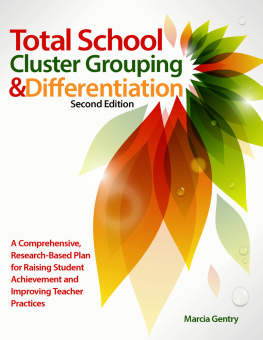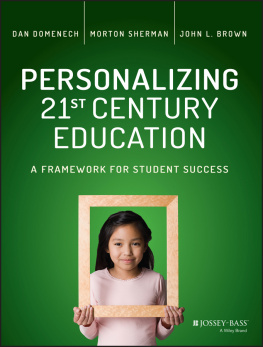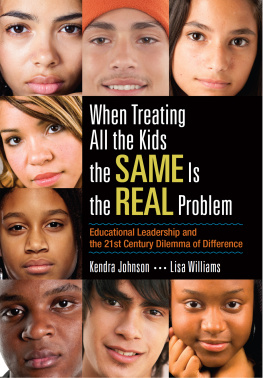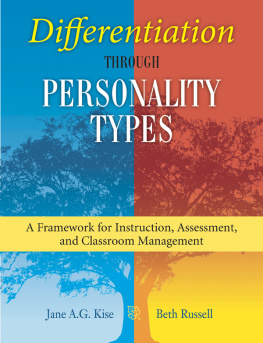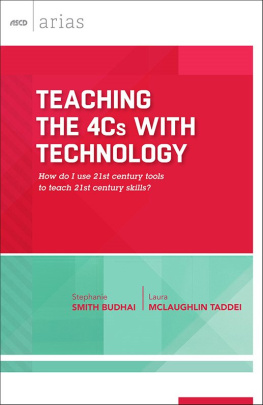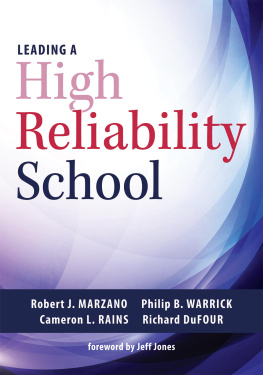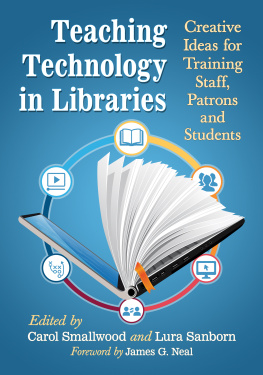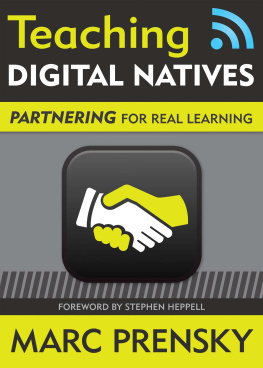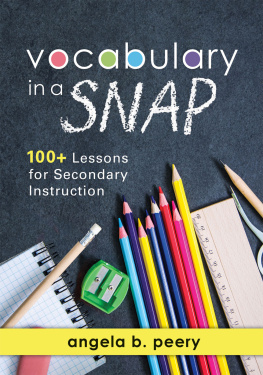the teaching
REVOLUTION
the teaching
REVOLUTION
RTI, Technology, & Differentiation
Transform Teaching for
the 21st Century
WILLIAM N. BENDER
LAURA WALLER


FOR INFORMATION:
Corwin
A SAGE Company
2455 Teller Road
Thousand Oaks, California 91320
(800) 233-9936
Fax: (800) 417-2466
www.corwin.com
SAGE Ltd.
1 Olivers Yard
55 City Road
London, EC1Y 1SP
United Kingdom
SAGE India Pvt. Ltd.
B 1/I 1 Mohan Cooperative Industrial Area
Mathura Road, New Delhi 110 044
India
SAGE Asia-Pacific Pte. Ltd.
33 Pekin Street #02-01
Far East Square
Singapore 048763
Acquisitions Editor: Jessica Allan
Associate Editor: Allison Scott
Editorial Assistant: Lisa Whitney
Production Editor: Amy Schroller
Copy Editor: Matthew Sullivan
Typesetter: Hurix Systems Pvt. Ltd.
Proofreader: Victoria Reed Castro
Indexer: Judy Hunt
Cover Designer: Scott Van Atta
Permissions Editor: Karen Ehrmann
Copyright 2011 by Corwin
All rights reserved. When forms and sample documents are included, their use is authorized only by educators, local school sites, and/or noncommercial or nonprofit entities that have purchased the book. Except for that usage, no part of this book may be reproduced or utilized in any form or by any means, electronic or mechanical, including photocopying, recording, or by any information storage and retrieval system, without permission in writing from the publisher.
Printed in the United States of America
Library of Congress Cataloging-in-Publication Data
Bender, William N.
The teaching revolution: RTI, technology, and differentiation transform teaching for the 21st century / William N. Bender, Laura Waller.
p. cm.
Includes bibliographical references and index.
ISBN 978-1-4129-9199-5 (pbk.)
1. TeachingUnited States. 2. Educational changeUnited states. 3. Educational technologyUnited States. 4. Response to intervention (Learning disabled children) 5. Individualized instructionUnited States. 6. Mixed ability grouping in educationUnited States. I. Waller, Laura. II. Title.
LB1025.3.B457 2011
371.1020973dc23
2011024510
This book is printed on acid-free paper.
11 12 13 14 15 10 9 8 7 6 5 4 3 2 1
Contents
Acknowledgments
Corwin gratefully acknowledges the contributions of the following reviewers:
Judy Brunner
Author, Consultant, University Faculty
Instructional Solutions Group & Missouri State University
Springfield, MO
Laurie Emery
Principal
Old Vail Middle School
Vail, AZ
Amanda McKee
Secondary Math Teacher
Johnsonville, SC
Linda R. Vogel
Associate Professor
University of Northern Colorado
Greeley, CO
About the Authors
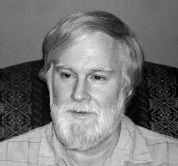
William N. Bender is an international leader who focuses on practical instructional tactics with an emphasis on response to intervention (RTI) and differentiated instruction in general education classes across the grade levels. In particular, Dr. Bender has written more books on RTI than any other author in the world, two of which are best sellers. He has now completed seven books on various aspects of RTI, as well as a professional development videotape on that topic. He completes between forty and fifty workshops yearly in the United States, Canada, and the Caribbean. In the fall of 2010, he was selected to work with the Ministry of Education in Bermuda to establish their nationwide RTI framework. One of his recent books, Beyond the RTI Pyramid, was a 2010 finalist for the Distinguished Achievement Award for Excellence in Educational Publishing.
Dr. Bender uses practical strategies and easy humor to make his workshops an enjoyable experience for all, and he is frequently asked to return to the same school or district for additional workshops. He consistently receives positive reviews of his professional development workshops for educators across the grade levels. Dr. Bender believes his job is to inform educators of innovative, up-to-date tactics for the classroom, rooted in current research, in an enjoyable workshop experience. He is able to convey this information in a humorous, motivating fashion.
Dr. Bender began his education career teaching in a junior high school resource classroom, working with adolescents with behavioral disorders and learning disabilities. He earned his Ph.D. in special education from the University of North Carolina and has taught in leading universities around the nation, including Rutgers University and the University of Georgia. He is now consulting and writing full-time and has published over sixty research articles and twenty books in education.

Laura Waller is an exciting, young, dynamic educator and the co-author of RTI and Differentiated Reading in the K8 Classroom. Ms. Waller began her career as a reading specialist in elementary education, working at an inner-city school in Washington, DC. With degrees from both Appalachian State University and Johns Hopkins University, she succeeded in her teaching of English-learning students, underprivileged students, Title I students, and many other students who struggled in reading and mathematics.
Ms. Waller is now teaching underprivileged children in a rural school in North Carolina and doing workshops for educators on technology for reading instruction and differentiated instruction in core academic areas. She also offers workshops on classroom use of Smart Boards, e-assessments, and other technologies to facilitate differentiation and academic progress. She recently received funding from the Bright Ideas Grant to implement hands-on literacy centers that support learning with a focus on technology and preparing students to be globally competitive in the 21st century. Her instructional practices have been featured in a professional development video, Differentiating Math Instruction (Corwin, 2009).
Introduction
The Three Sisters: RTI, Technology, and Differentiation Are Changing the World of Teaching
In a world changing drastically, what can we imagine our future to be?
IMAGINING
The famed songwriter, and some would say philosopher, John Lennon once invited us to imagine a new world.
The civil rights leader, and many would say the stand-alone moral leader of the 20th century, Dr. Martin Luther King invited us to dream what might be, thereby providing us with a vision to guide human inter-actiona vision of kindness, nonviolence, and understanding.
The great Mahatma Gandhi imagined a world in which political and economic justice would be achieved through nonviolence. He created that reality for the first time in history with the sheer power of his single-minded will.
And from a text sacred to Christians, Jews, and Moslems alike, we read, God said, Let there be light! And there was light.
These examples show the amazing power of imagination. The power of thought is fundamental to the Jewish, Christian, and Islamic traditions, in that Gods imaginingshis very wordscreated our world and breathed life into our species. Each of the men mentioned knew and deeply understood that singular fact, as shown in the amazing power of their dreams, their imaginings. Human thought, imagining, is a profound creative power of will; it can and frequently does change the world. If the pen is indeed mightier than the sword, then the power that drives the penthe power of the mind, the power of imaginationis the most profound power of all. Imagining is the most influential creative force in our universe.
Next page

